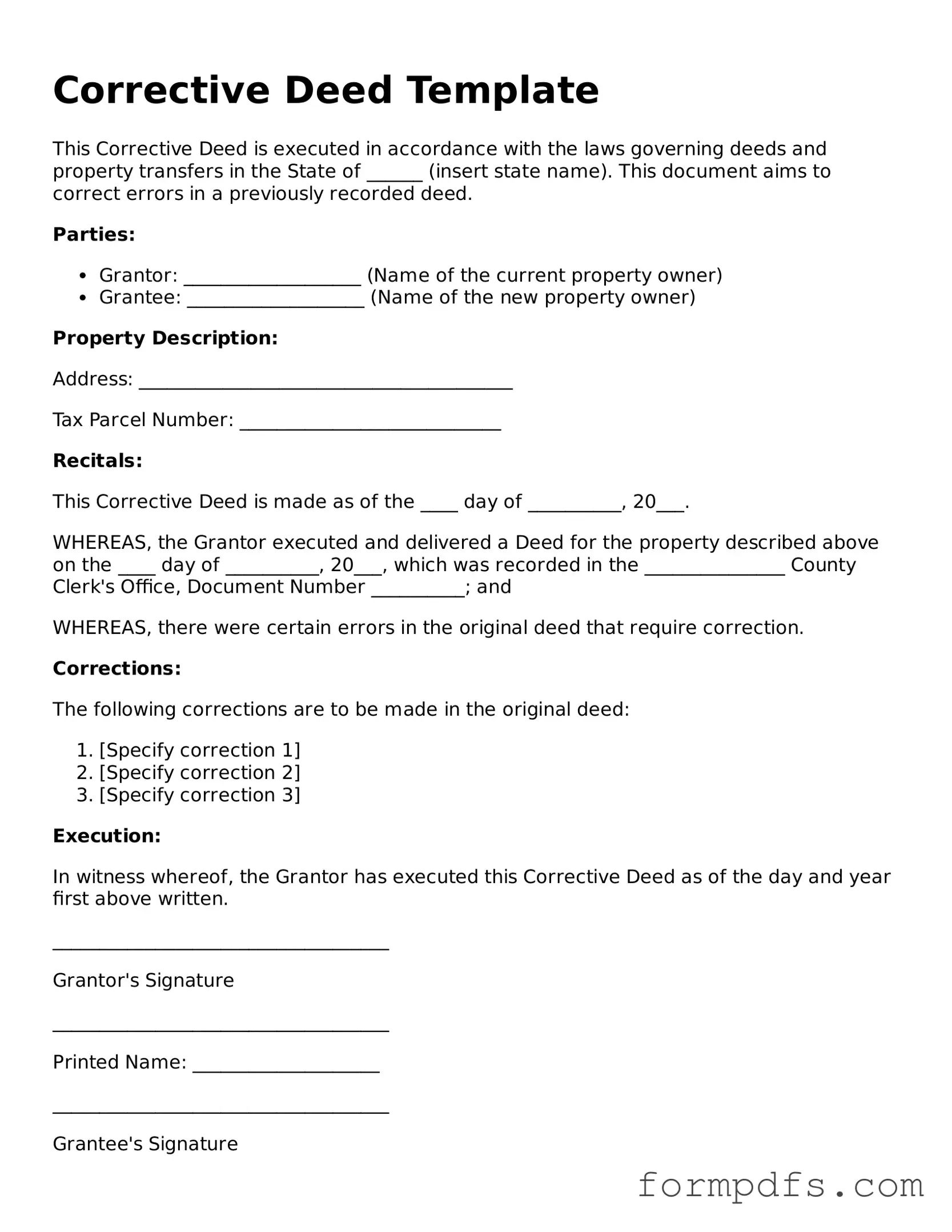A Corrective Deed is a legal document used to correct errors in a previously executed deed. These errors may include mistakes in the property description, misspellings of names, or inaccuracies in the legal language. The purpose of this form is to ensure that the deed accurately reflects the intentions of the parties involved.
You should consider using a Corrective Deed when you discover an error in a deed that has already been recorded. Common scenarios include incorrect property boundaries, wrong names of grantors or grantees, or any other discrepancies that could lead to confusion or disputes in the future.
What information is required in a Corrective Deed?
A Corrective Deed typically requires the following information: the original deed's recording details, the names of the parties involved, a clear description of the property, and a statement outlining the specific corrections being made. It may also include the date of the original deed and the reason for the correction.
Do I need to file the Corrective Deed with the county?
Yes, a Corrective Deed must be filed with the appropriate county recorder’s office where the original deed was recorded. This ensures that the public record is updated and reflects the corrected information.
Will a Corrective Deed affect my property title?
A Corrective Deed is designed to clarify and correct the title to your property. Once recorded, it helps eliminate any potential issues or disputes that may arise from the original errors. It is important to ensure that the corrections are accurately reflected to maintain a clear title.
Is there a fee associated with filing a Corrective Deed?
Yes, there is usually a fee associated with filing a Corrective Deed, which varies by county. It is advisable to check with your local recorder’s office for specific fee amounts and payment methods accepted.
Can a Corrective Deed be contested?
While it is possible for a Corrective Deed to be contested, challenges are typically based on the validity of the original deed or the corrections made. If the corrections are clear and accurately reflect the intent of the parties, successful challenges are less likely.
How long does it take for a Corrective Deed to be processed?
The processing time for a Corrective Deed can vary depending on the county's workload and procedures. Generally, it may take anywhere from a few days to a few weeks for the document to be recorded and made part of the public record.
